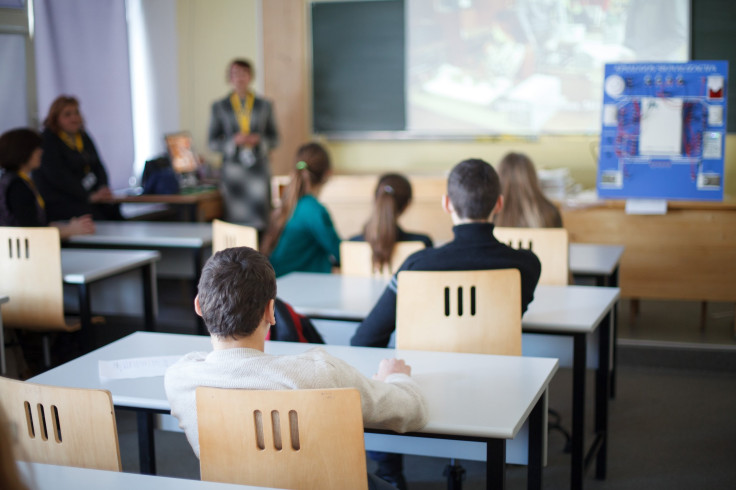Ideal Classroom Is Warm, Full Of Natural Light, And Has No Native American Mascots

If you’ve perused a newspaper recently, it’s likely you’ve heard that U.S. students are seriously lagging behind their international counterparts when it comes to school grades, especially in math, according to a 2012 international exam. While it’s clear that improvements in the actual education system are needed, a team of researchers set out to uncover if the physical setup of a classroom had anything to do with influencing a student’s academic performance. What they came up with is pretty interesting and could perhaps serve as the model for the ideal learning environment.
Warm And Bright
The study found that the physical environment one learned in was directly linked to a student’s performance. For example, according to the press release, students exposed to more natural light performed better than students who were not. Unfortunately, the National Center for Education Statistics (NCES) released data this year showing that 16 percent of schools with permanent buildings and 28 percent of schools with portable facilities do not have adequate lighting.
Temperature also played a role, and the team concluded that the optimal learning environment was between 68 and 74 degrees. The NCES further revealed that this heating standard is not met in 16 percent of schools with permanent buildings and 12 percent of schools with portable facilities.
Diversity, But Only The Good Kind
The way that a classroom is decorated was also found to be an indication of its students' academic performance. For example, the study revealed that science classrooms with photographs of female scientists improved young girls' test scores. The same proved true for students of traditionally disadvantaged backgrounds who were surrounded by classroom objects that depicted achievement.
However, although America has come a long way from the days of a segregated education system, lack of diversity is still a significant problem in American education. For example, of the 3,200 children’s books published in 2013, only 93 were about black people, a separate study found.
In the larger study, this depiction of diversity stretched further than race or gender. Classrooms that contained physical objects appealing to only some students discouraged students that didn’t identify with the objects from enrolling. In other words, a computer science class with an overabundance of science fiction decorations might prevent a student who wasn’t particularly interested with science fiction from enrolling in the class.
In general, diversity was found to be beneficial, but the wrong kind of depiction of ethnic minorities was actually detrimental to some students' education. The researchers wrote that “token” symbols to represent an ethnic group, such as an American Indian mascot, caused students from these groups to express lower self-esteem.
These findings have already been adopted by the University of Washington Computer Science and Engineering department, but the study’s researchers believe the results could prove especially beneficial for schools with students from lower income families. “This research should be used in developing and implementing education policy for state-level boards, local school boards, school and program administrators, and teachers. Organizations that promote standards for certification and accreditation might encourage training on classroom environments,” the researchers said in the press release.
Source: Cheryan S, Ziegler SA, Plaut VC, Meltzoff AN. Designing Classrooms To Maximize Student Achievement. Policy Insights from the Behavioral and Brain Sciences. 2014.
Published by Medicaldaily.com



























